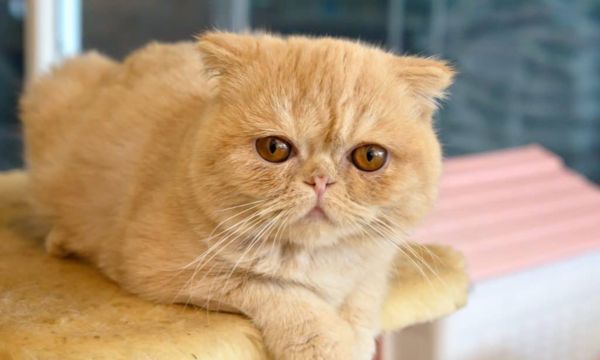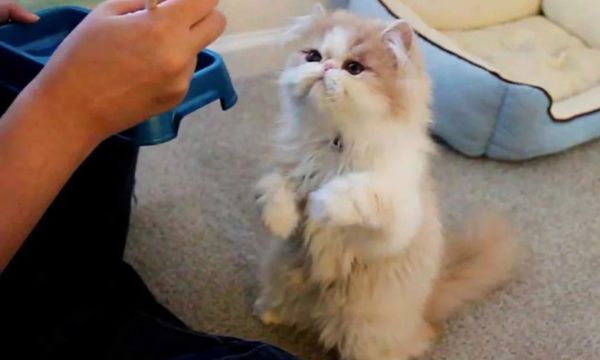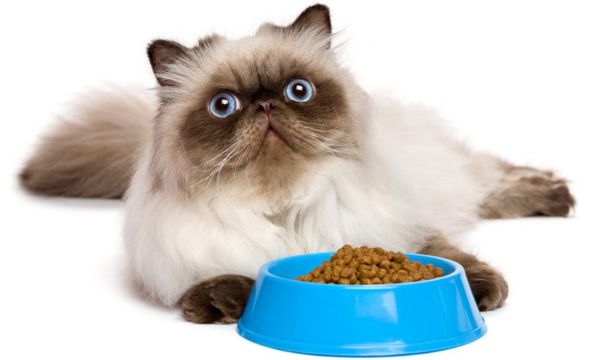Owning a Persian cat is fun because they are beautiful and cute. But their unique body also makes them more susceptible to certain health problems.
As a responsible pet owner, you should be aware of these potential health issues and take steps to ensure your Persian cat stays healthy.
This comprehensive guide will help you deal with common health issues and provide helpful tips on how to keep your beloved feline healthy and happy.
Common Health Problems in Persian Cats:
As beautiful as Persian cats look, their flat faces and long coats can cause health problems. Here are some of the most common health problems:
Breathing Problems: Because of their flattened faces (brachycephalic), Persian cats often have trouble breathing. Because of the short nasal tubes, they can snore, wheeze and have trouble breathing, especially when it’s hot or humid.
Dental Problems: Due to their unique facial shapes, Persian cats can suffer from dental problems such as crooked teeth, crowded teeth and a higher chance of developing periodontal disease. Regular oral care is the only way to avoid these problems.
Skin and Coat Issues: Persian cats have long, soft fur that requires careful grooming. Without proper grooming, their fur can become tangled, which can irritate their skin and make them more susceptible to disease.
Eye Conditions: Their large, expressive eyes can suffer from excessive tearing, eye infections, and lens ulcers. Tear stains are a common problem among Persian cat owners and can exacerbate these problems.
Urethral Problems: Persian cats can develop urinary problems such as bladder infections and urinary blockages. These problems are compounded by their size and the fact that they drink less water.
Maintain a Healthy Diet:
The health of Persian cats starts with a balanced diet. Choose a high-quality cat food that contains all the nutrients they need.
Because Persian cats are prone to being overweight, it’s important to monitor their weight and make sure they don’t overeat. Talk to your vet to find the best diet and feeding plan for your cat based on his age, weight and activity level.
Grooming and Preventing Skin Problems:
To keep your Persian cat’s coat in good condition, you should clean it regularly. Comb your hair daily to prevent tangles, tangles or excessive falling out. Pay special attention to knot-prone areas, such as the belly and behind the ears.
You can also get to know your cat better and check its skin for signs of itching or other problems during grooming.
Dental Care for Persian Cats:
Due to the facial structure of Persian cats, they are more prone to dental problems. Create a dental care plan for your cat and brush regularly. Use a toothbrush and toothpaste designed specifically for cats to keep teeth clean and prevent plaque buildup.
Dental treats and toys that keep teeth and gums healthy can also be a great addition to their routine.
Lung and Breathing Problems:
The unique facial shape of Persian cats can make it difficult for them to breathe. Make sure their living space is well ventilated and free of things that might disturb them.
Do not put them on a high heat, as they may not control their body temperature very well. If your Persian cat has chronic breathing difficulties, see a vet immediately to rule out any problems.
Care for Eyes and Tear Stains:
Due to Persian cats’ large eyes, tear stains are a common concern for owners. Gently wipe the eye area with a damp cloth to reduce tear stains.
Check their eyes often for redness, excessive crying, or discharge, as these could be signs of an eye infection or other health problem. If you notice strange symptoms, take your pet to the vet.
Urinary Tract Health:
Urinary problems are a big problem for Persian cats. Because of their body structure and how little water they drink, they are more prone to urinary tract problems such as bladder infections and urinary tract blockages.
Feeding them a balanced diet will keep their urinary tract healthy and encourage them to drink plenty of water. If your cat behaves differently in the litter box or is uncomfortable urinating, take him to the vet immediately.
How to Recognize the Signs of Illness:
Cats are very good at hiding signs of illness, so it’s important to watch for changes in their appearance or behavior. Watch for signs of fatigue, hunger, vomiting, diarrhea, coughing, sneezing, or trouble breathing.
If you notice any of these symptoms, contact your doctor immediately for a full examination and proper diagnosis.
Regular Visits to the Vet:
Regular vet visits are necessary to keep a close eye on your Persian cat’s health and to address any problems immediately. Your vet can give your cat a complete physical exam, administer any necessary vaccinations, and recommend preventative measures tailored to her needs.
Regular checkups can help detect health problems before they become serious, increasing the likelihood that treatment will work.

Dealing with Persian Cat Health Issues-Google Source
Conclusion:
Raising a Persian cat is an amazing adventure full of love, friendship and commitment. By understanding and addressing the health issues that can occur with this unique breed, you can provide your cat with a better quality of life.
You can ensure that your Persian cat is happy, healthy and well-behaved by making sure that your Persian cat is properly fed, cleaned and has regular veterinary visits.
FAQs:
1. Are Persian cats more prone to obesity?
Yes, Persian cats are more prone to being overweight due to their sedentary nature and potential for overeating. Monitoring their diet and encouraging exercise are critical.
2. How often should I groom my Persian cat?
Daily grooming is recommended to prevent mats and tangles in the long coat. Regular grooming sessions also provide an opportunity to bond and allow you to monitor the health of their skin.
3. How to prevent dental problems in Persian cats?
Establish a dental care routine by brushing regularly and offering dental treats or toys. Regular veterinary dental checkups are also important.
4. Can tear stains in Persian cats be prevented?
Although tear stains are common in Persian cats, cleaning the eyes regularly and keeping the area around the eyes dry can help reduce tear stains. If it becomes excessive, see a vet.
5. How to ensure the health of the Persian cat’s urinary system?
Provides a balanced diet, supports urinary tract health and promotes proper hydration. Monitor them for any changes in their litter box habits and seek the help of a vet if necessary.
6. How often should I take my Persian cat to the vet?
Annual checkups are recommended, but if you notice any medical problems, more frequent checkups may be necessary. Consult your vet for advice and create a preventative care plan based on your cat’s needs.


